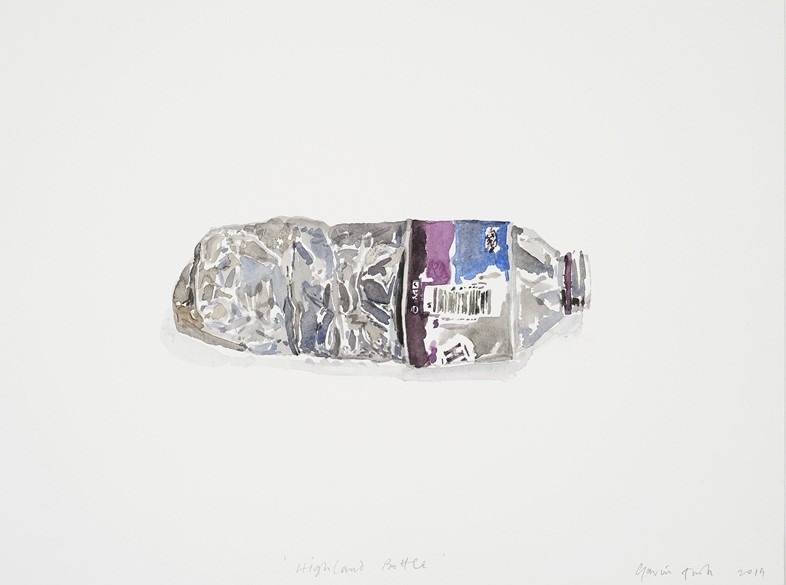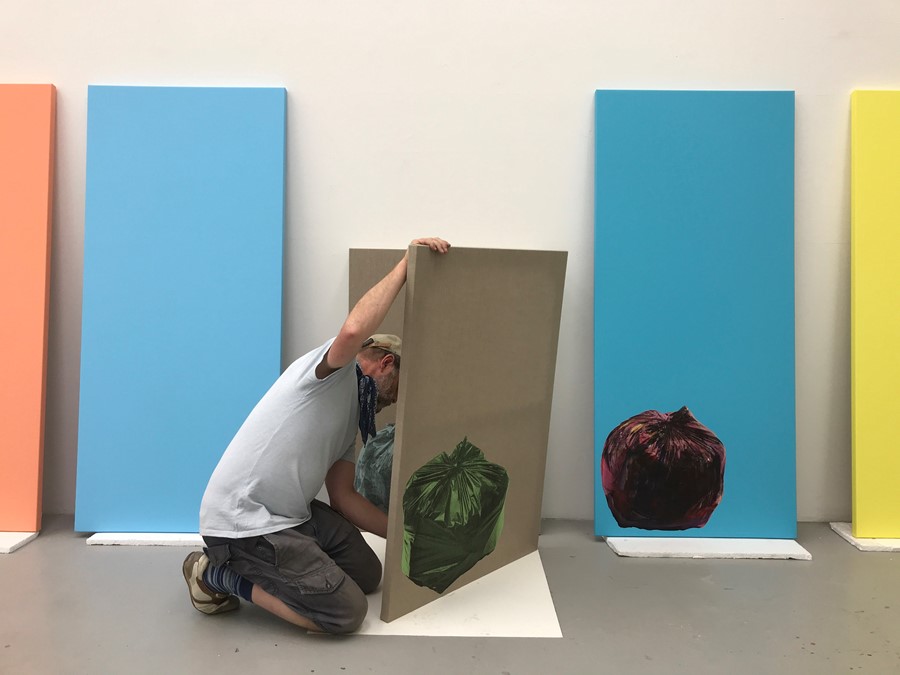Ahead of a conversation at his east London studio this week, pioneering British artist Gavin Turk – who was arrested as part of Extinction Rebellion’s 2018 protests – shares thoughts on how contemporary art can and should be addressing climate change
One of Gavin Turk’s most famous artworks, Bag (2000), appears to be just a black bin liner. The artwork had actually been crafted in bronze, and painted by the YBA artist to have the exact appearance of a half-full, knotted and slouching black plastic rubbish bag. Turk has long incorporated everyday ephemera into his work: earlier this year at Photo London, he unveiled a giant bronze sculpture of an egg (a recurring motif for the artist since the 90s), and subsequently invited the public to create their own works of art by photographing the creation. Our modern environment – and both its natural and manmade elements – have impacted Turk’s practice.
Ahead of opening the doors of his east London studio for a talk hosted by women’s network Marguerite on, among other things, the art world’s impact on the environment, the British artist talks to AnOther about rubbish, recycling and returning artworks – and Extinction Rebellion (in 2018, Turk was one of 82 people arrested in London at a protest organised by the group).

Harry Seymour: Has the environment always been a subject of your work?
Gavin Turk: Always to a point. From early on I remember making works that recycled stuff. It’s this idea that there is already enough stuff to get the job done. We don’t need to go and get more.
HS: Is that why your website says you use rubbish in your art?
GT: When I throw away a plastic bottle, for instance, I find myself suddenly going through the whole history of plastic – of the production, of the industry, of the molecules, of the whole relationship between me and the object I have just consumed. As I go to throw it away that’s the moment the story comes back out the bin and back at me. That is exactly when you’re able say “right, what was the value curve of this object? What happened? How did this object come to be?” And that tells us something about human history.
HS: What do you think about the art world’s carbon footprint?
GT: There is this idea that it has a large carbon footprint. If you think of art fairs, and their global system and how people fly all over the world to go to these fairs, in many ways it’s a lot smaller than, say, the football world, with teams and fans flying around.
One year I stayed in Basel after the Art Basel fair, and the next thing at the expo centre was a watch fair. I went and was absolutely shocked – there were many more people and much more money, more stuff, more commerce happening there than at the art fair.
People want to blame the art world and somehow transform it, and we can and should, but I want to put it in perspective. People should do things like transport art overland and not fly it when they can, and be thoughtful of materials or use efficient energy for making stuff. But a painting really uses very little resources and the painter is just in their studio fiddling around.
HS: What about companies recycling art packaging into childrens’ playgrounds or Frieze using digital passes this year at their London fair?
GT: Good! The thing at Frieze was beautiful – this idea to have no single use plastic, but at the same time if you wanted a VIP pass they were plastic, and they had to have charging ports so that everyone could charge their phones for the digital passes, or people had printed out their passes. There were some teething problems. The problems are good though because they make people think, “Why is this annoying?”
HS: They planned to have members of Extinction Rebellion walk people between Frieze and Frieze Masters this year while discussing their protests. What do you think about that?
GT: I don’t know if that came to fruition. I know people who were involved with that and I think it was a really good idea. They also discussed doing an Extinction Rebellion booth in the fair, but it was too late in the day.
“When I throw away a plastic bottle, for instance, I find myself suddenly going through the whole history of plastic – of the production, of the industry, of the molecules, of the whole relationship between me and the object I have just consumed” – Gavin Turk
HS: What do you think of Extinction Rebellion?
GT: I am all for it. It is contagious, and a great British export! Whether all the tactics are right? I don’t necessarily agree with all the things people do in the name of peaceful protests, but at the same time it’s important that it happens. It’s making people sit up. More power to them.
HS: What about the links between museum sponsorship and, say, oil companies?
GT: Well, organisations are in a situation where they need corporate funding because they’re not getting enough public money to run their programmes. I have to sell art to people who can afford it, and some of those people might make money through processes I don’t agree with. I think these things are a wonderful opportunity to say “we really want you to tell the truth about how they work and is there any way we can help you in a more positive way?” Simply going, “You’re doing something wrong, yuck”, is strange because it doesn’t talk about the holistic picture.
HS: How would you feel if your art was in the collection of someone who made money profiteering from damaging the environment?
GT: I don’t know, it depends. I try to be as fair as I can on everybody. I’d hope my work was a worm in the collection which may turn it around. But I don’t think it’s possible to pick up the phone and say “I don’t like you, return my work!”
HS: Do you think the environment will play a bigger role in your work, both practically and in its message, in the future?
GT: I hope the answer to both is yes. We will recycle things from the studio, maybe even into the art, and hopefully the art itself will be useful. A lot of art is centred around individualism and consumption and those two things have become great problems with the human effect on the climate – and there is something about the physical experience of being in the same place as an artwork.
HS: So art should in person to be seen to be fully appreciated?
GT: You can see it on the internet, and go “Oh yeah, I am interested in that”, then you go and see it and it becomes something different. Art is an intuitive process and that’s why when you experience it in the round, in what you consider to be your real world, it can have its best effect.
Marguerite, the club for women who work in the visual arts, is hosting a studio visit and conversation with Gavin Turk on October 24, 2019. Tickets and more information can be found here.
